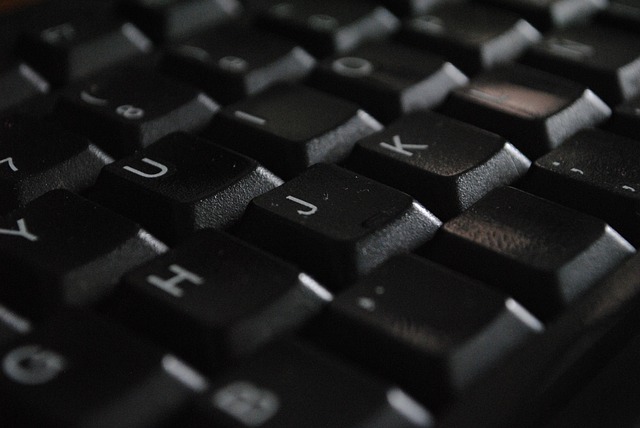What Are the Potential Applications of Haptic Technology?
In the realm of gaming, haptic technology elevates the experience from mere visuals and sounds to something you can physically feel. Think of it as the difference between watching a thrilling car chase and feeling the jolt of every turn and collision through your controller. This tactile feedback immerses you deeper into the game, making every action more engaging and realistic.
But haptic tech doesn’t stop at entertainment. In the medical field, it’s revolutionizing surgery and rehabilitation. Surgeons can use haptic feedback to feel the texture of tissues, making precision in operations significantly better. Meanwhile, virtual reality rehabilitation programs use haptic technology to help patients regain motor skills by giving them a realistic sense of touch in their exercises.


These examples barely scratch the surface of what haptic technology can offer. From enhancing virtual experiences to transforming professional fields, the potential applications are as vast as they are exciting.
Haptic Technology: Revolutionizing Communication Through Touch
Think of it as adding a new layer of connection to your interactions. Traditionally, our communication is confined to sight and sound, but haptic tech adds the sense of touch into the mix. It’s like upgrading from a standard phone to a smartphone with all the bells and whistles—suddenly, your messages, games, and even virtual meetings become more immersive.
Picture this: you’re playing a game and every explosion, bump, or knock is transmitted through your controller. You’re not just seeing or hearing the action; you’re physically feeling it. This level of immersion can revolutionize industries beyond gaming. In healthcare, for instance, surgeons could practice intricate procedures with virtual tools that provide realistic feedback. In education, students could experience historical events or scientific phenomena through tactile simulations.
And it’s not just about novelty; it’s about enhancing understanding and interaction. Haptic technology could make remote communication feel more personal. Imagine attending a virtual conference where you can actually feel a handshake or a pat on the back. It bridges the gap between the digital and physical worlds, making virtual interactions feel more genuine and connected.
In essence, haptic technology is like giving our digital world a pair of hands—hands that can touch, feel, and interact in ways we’ve never experienced before.
From Virtual Reality to Medicine: Exploring the Versatile Uses of Haptic Feedback
In the realm of virtual reality (VR), haptic feedback adds a layer of realism that takes immersion to a whole new level. Picture a surgeon practicing a complex procedure in a simulated environment. With haptic technology, they can “feel” the textures and resistance of various tissues, making their training sessions incredibly lifelike. It’s akin to getting hands-on experience without any real-world risks—imagine learning to ride a bike in a dream where every pedal stroke feels real.
But the impact of haptic feedback extends beyond VR. In medicine, it’s used to create sophisticated rehabilitation tools. For instance, patients recovering from strokes can use haptic devices to regain motor skills by interacting with virtual objects that provide realistic resistance and feedback. It’s like having a personal trainer for your hands, guiding you through exercises with precise, tangible sensations.
Moreover, haptic technology enhances prosthetics by providing users with a sense of touch. This is groundbreaking because it bridges the gap between the artificial and the biological, allowing prosthetic limbs to feel more like a natural extension of the body. Imagine being able to feel the texture of an object or gauge its pressure through a prosthetic hand—haptic feedback makes that possible.
In essence, haptic feedback is more than just a cool gadget; it’s a powerful tool that’s reshaping various industries by bringing a tactile dimension to both virtual and real experiences.
How Haptic Technology is Transforming Gaming and Entertainment
Think of it as the difference between watching a movie and stepping onto a ride at an amusement park. With traditional gaming, you’re merely observing. But with haptic feedback, you’re not just seeing the action; you’re physically experiencing it. This technology adds layers to the gaming experience, enhancing everything from the subtle rumble of a distant thunderstorm to the sharp recoil of a gunshot.
What makes haptic technology so exciting is its ability to immerse players completely. It’s not just about feeling a vibration; it’s about conveying texture, force, and motion. For instance, in racing games, you can feel the vibrations of the road, the resistance of the steering wheel, and even the changes in terrain—all translating into a more realistic driving experience.
Haptic tech isn’t limited to just gaming. In entertainment, it’s revolutionizing how we interact with movies and virtual reality experiences. Imagine a horror film where you can feel the tension and suspense through your seat. It adds a new dimension to media consumption, making you an active participant rather than a passive observer.
In essence, haptic technology is pushing boundaries, making our interactions with digital worlds more visceral and dynamic. It’s like bringing the sensory thrill of real life into the digital realm, transforming how we experience both games and entertainment.
The Future of Haptics: Applications Beyond Virtual Reality
First, let’s think about healthcare. Picture a surgeon using a robotic arm to perform delicate operations from miles away. Haptic technology can provide the surgeon with tactile feedback, making remote surgeries as precise as if they were done in person. It’s like giving the surgeon an extra set of hands—hands that can feel every tiny adjustment needed during the procedure.
Then there’s education. Imagine students learning about historical artifacts or biological structures through touch. Haptic devices could let them feel the texture of ancient relics or the intricate details of a cell’s structure. It’s like bringing a museum or laboratory right into the classroom, making learning a much richer experience.
Now, let’s talk about the retail world. Online shopping is convenient, but it’s missing something crucial—the ability to feel the products. Haptic technology could change that by allowing shoppers to experience the texture and weight of items virtually before making a purchase. It’s like having a physical store experience without leaving your home.
And what about communication? Haptic feedback could transform how we express emotions. Imagine a text message that delivers a gentle, reassuring vibration when your friend sends it, or a virtual handshake that actually feels like you’re making contact. It’s a new way of making connections that bridges the gap between digital and physical interactions.
The possibilities are endless and exciting, and as haptic technology evolves, it will redefine how we interact with the world in ways we can barely imagine today.
Haptic Technology in Healthcare: Enhancing Patient Treatment and Training
Haptic technology, at its core, is all about touch. It uses sophisticated sensors and feedback mechanisms to simulate the sensation of touch and pressure. Picture a surgeon practicing on a virtual patient. With haptic devices, they can actually feel the texture of tissues and the resistance of muscles, which makes the training much more realistic compared to traditional methods.
But it doesn’t stop at training. For patient treatment, haptic technology is a game-changer too. For instance, it can enhance robotic surgeries by giving surgeons precise tactile feedback. This means they can maneuver surgical instruments with unparalleled accuracy, leading to quicker recoveries and fewer complications.
What’s even more fascinating is how haptic technology helps in rehabilitation. Imagine a patient using a rehab robot that adjusts its resistance based on the user’s movements. This real-time feedback can make physical therapy sessions more tailored and efficient, helping patients regain mobility faster.
So, why does this matter? It’s simple. Just like a musician perfects their craft by feeling the strings of their instrument, healthcare professionals need to feel their way through procedures to excel. Haptic technology bridges that gap, offering a tactile dimension to training and treatment that was previously unattainable.
